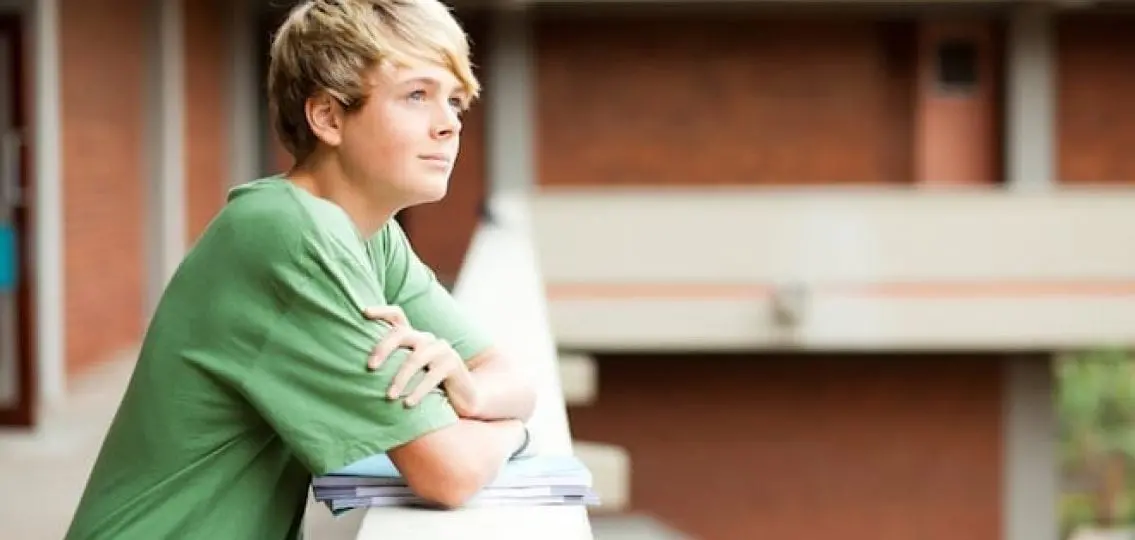Does your middle schooler 1) Prefer pizza night with a few friends to a raucous dance party? 2) Take time to warm up in social settings? 3) Avoid gatherings altogether because they feel they don’t belong, and they feel that others will think they look and act dumb?
If any of these descriptions sound familiar, it’s not just because your tween is at an awkward age where their body is changing and friends are more important than breathing. Your tween also could be an introvert, shy, or socially anxious.
As parents, we sometimes use these three terms interchangeably, but experts say they aren’t the same. If you can recognize the difference, you’ll be better equipped to help your middle schooler develop healthy, effective tools to negotiate their social and academic life.
Introverted vs Shy vs Socially Anxious:
1. Introverted
For introverts, middle school is especially challenging because new social demands conflict with their reserved nature and need for downtime, writes author Susan Cain in her bestseller, Quiet.
“The middle and high school years are the most difficult times to be introverted because when hundreds of kids are crammed together in a single building, it can feel as if the only way to gain respect and friendship is through vivacity and visibility,” Cain writes.
Introverts generally prefer a small circle of friends and are content with a quieter style at school, says Lynne Siqueland, a clinical psychologist at the Children’s and Adult Center for OCD and Anxiety in Plymouth Meeting, Pennsylvania.
2. Shy
While introversion is a fairly stable personality trait, shyness may be circumstantial. Tweens may not always exhibit shyness, but may hang back when they join a gathering or hesitate to participate in class.
3. Socially Anxious
When a tween has social anxiety, the anxiety interferes with daily life and keeps them from interacting, even if they want to. They will cut class to avoid giving a presentation or won’t go to a party because they’re afraid they will somehow be embarrassed, says Kathy HoganBruen, group therapy program director at the Ross Center for Anxiety and Related Disorders in Washington, D.C.
“It’s all really a matter of degrees in trying to define these things,” HoganBruen says. “Social anxiety becomes a disorder depending on how much distress a person feels and how much impairment they experience.”
About half of all teens describe themselves as shy, according to a national study of 10,000 teens sponsored by the National Institute of Mental Health. But at around age 13, social anxiety, a disorder that disrupts normal behavior, emerges in 12 percent of shy teens and in five percent of teens who don’t think of themselves as shy. Shyness and social anxiety aren’t always linked, but they certainly can be.
Social anxiety grows when tweens continue to avoid situations that make them nervous, says Siqueland, who has treated hundreds of tweens and adolescents over the past 20 years. Over time, untreated social anxiety puts people at a higher risk for serious problems such as depression and substance abuse.
Cognitive behavioral therapy can ease social anxiety, especially when it is significant, but parents can also help their tweens by gently guiding them to confront social discomfort, says Hogan Bruen.
“It doesn’t take a lot to get over social anxiety,” adds Siqueland. “It’s about facing fear, and it gets better pretty easily if you start to face it. Know that kids can feel better and happier relatively quickly.”
Meanwhile, there are things that parents can do, and not do, to help their teens.
3 Things Parents Should Avoid:
- Don’t Call your tween “shy.” If a tween is prone to avoidance, this label gives them an excuse not to take risks. You can explain that “shy” is a feeling that happens sometimes, not a permanent personality trait.
- Don’t push your shy child to jump in at social gatherings. Give them time to warm up.
- Don’t always expect your socially anxious middle schooler to coordinate events on their own. Invite a family over to dinner to facilitate some low-stress socializing.
5 Things Parents Should Do:
- Do encourage downtime for introverts who need to recharge after school. They may do better with fewer extracurricular activities than an extrovert who craves more company and external stimulation.
- Do use incentives to expose your shy or socially anxious tween to challenging situations. If they want ice cream, you can insist that they go into the shop alone to order for themselves. If that’s too challenging, start with easier tasks first, like ordering at a restaurant when you are at the table with them.
- Do support use of social media to network with friends (but as a supplement to in-person socializing, not a replacement).
- Do offer to stay (out of sight, of course!) at a party and chat with the host parents while your shy or socially anxious tween settles in.
- Do work with teachers to increase class participation. Perhaps ask them not to call on your shy student for the first month and then slowly raise expectations.




